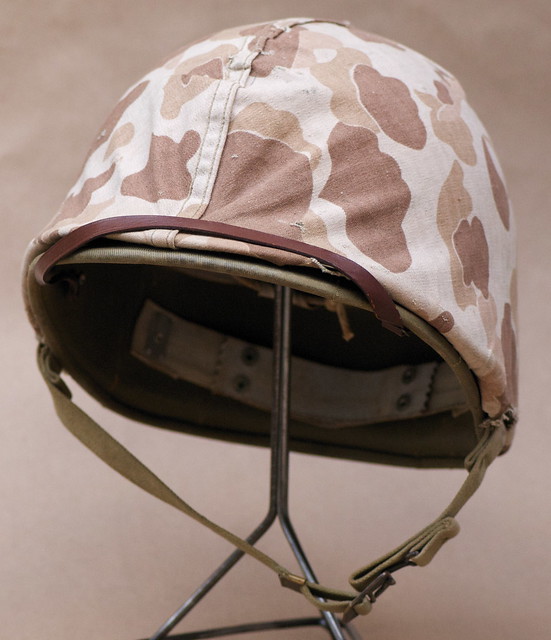
The cover has had two slits cut for better fit and this feature is found on most issued covers:
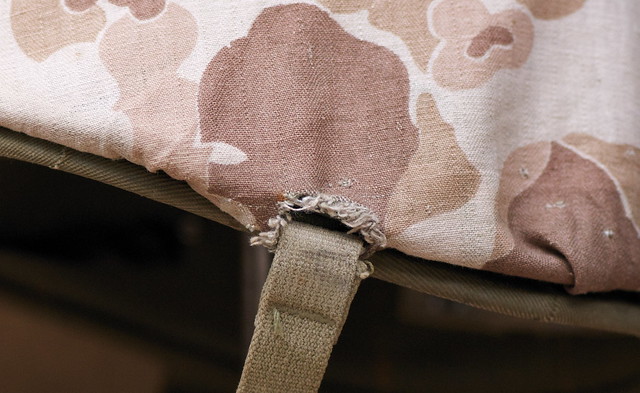
One of several features to look for on an original cover is chain stitching on the beach side:
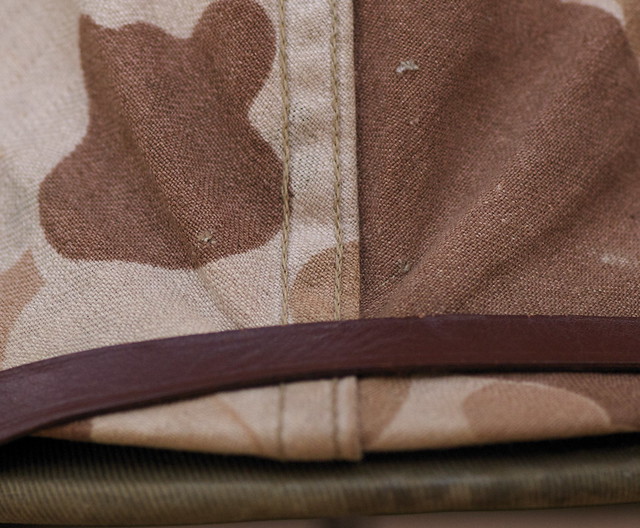
Further disassembly of the helmet at this time would likely risk damaging the very fragile original liner:
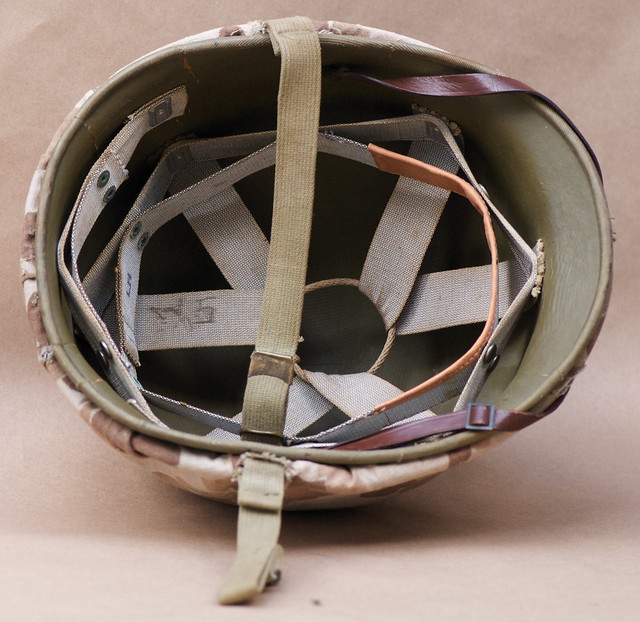
Camouflage helmet covers began being used with the U.S. Marines in combat following the battle of Guadalcanal. Here's this combination in use during 1943:
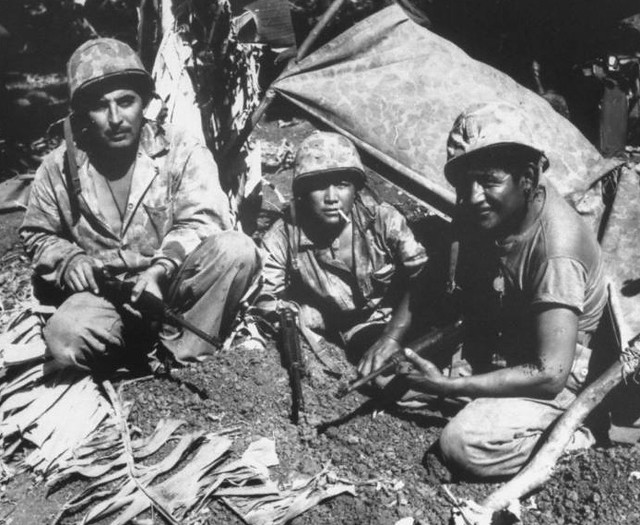

No comments:
Post a Comment